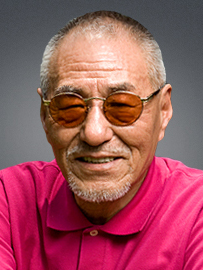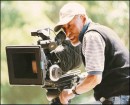A true master of his domain, JUNG Il-sung filmed more than 150 movies over a career spanning six decades, including 17 film from IM Kwon-taek. Born in Tokyo in 1929 during the Japanese colonial rule of Korea, he moved to Korea with his family soon after the Liberation in 1945. When the Korean War broke out in 1950, he was among the many people who took refuge in Busan. Once he completed his engineering studies, he enrolled at the Republic of Korea Army Infantry School and was...
More
A true master of his domain, JUNG Il-sung filmed more than 150 movies over a career spanning six decades, including 17 film from IM Kwon-taek. Born in Tokyo in 1929 during the Japanese colonial rule of Korea, he moved to Korea with his family soon after the Liberation in 1945. When the Korean War broke out in 1950, he was among the many people who took refuge in Busan. Once he completed his engineering studies, he enrolled at the Republic of Korea Army Infantry School and was appointed second lieutenant in 1951. He first served as an engineer and a Japanese language interpreter in the United States Forces Korea before joining the United States Information Service in Busan. In 1954, his college friend JEONG In-yeob was commissioned by the Republic of Korea Air Force to make a propaganda film and asked for his help. This first experience in film while assuming the role of first assistant director on <Assail Order> convinced JUNG Il-sung to pursue a career in the field, and so he quit the army to spent the next three years learning the trade from KIM Hag-sung, the cinematographer who would notably be responsible for the classic <An Aimless Bullet> (1961). JUNG received his first credit in 1957 as a camera operator on <Farewell Sorrow>. A few years later, he was offered the opportunity to train in Japan, and this eventually led him to work with none other than Akira KUROSAWA, as first assistant camera on <Red Beard> (1965). Back in Korea, he developed his own style working with some of the greatest directors of his time, such as KIM Ki-young, YU Hyun-mok and KIM Soo-young. Particularly active in the 70s, he notably contributed to several films now regarded as some of the best of the decade. Among them were KIM Ki-young’s <Woman of Fire> (1971), for which he won Best Cinematography at the Grand Bell Award for and the Technical Award at the Baeksang Arts Award, and HA Gil-jong’s <The March Of Fools> (1975), a youth film that captured the zeitgeist of the era and later acquired a cult status among Korean directors and critics, in which JUNG deployed dazzling camera angles. With KIM Ki-young, he also worked on one of the director’s finest works, <Ieoh Island> (1977), a shamanist and environmentalist fable wrapped into a mystery film. His first collaboration with IM Kwon-taek came in 1979 with the crime drama film <Divine Bow>. Diagnosed with cancer the following year, JUNG was still recovering from a successful surgery when he took IM Kwon-taek’s offer to work on his Buddhist film project, <Mandara> (1981). The film came out at the right time, just when Korean traditional culture was enjoying a renewed interest among young adults, and brought IM to the forefront of Korean filmmaking. It also took on a particular significance for JUNG and Korean film historians in that it made him the first film technician in Korea to be credited as “director of photography” instead of the title “camera operator” commonly used until then. He would be in charge of almost all of IM’s following films, including <Seopyeonje> (1993), <Chunhyang> (2000) and <Chihwaseon> (2002). His cinematography in these films was praised for conveying a certain “Koreanness”, via images seemingly inspired by ink-and-wash paintings, but also for its expression of the “han”, a feeling of resigned sorrow for unresolved injustice that is said to be bound to Korean culture. These elements found their utmost expression in the five-minute long shot in <Seopyeonje> when the three wandering “pansori” performers walk down a country road while singing a folk song, “Jindo Arirang”. This allowed him to win Best Cinematography at both the Blue Dragon Film Awards and the Grand Bell Awards. Upon wrapping filming on <Beyond The Years> (2007), the 100th film from IM Kwon-taek, JUNG retired at the age of 78.
Less







